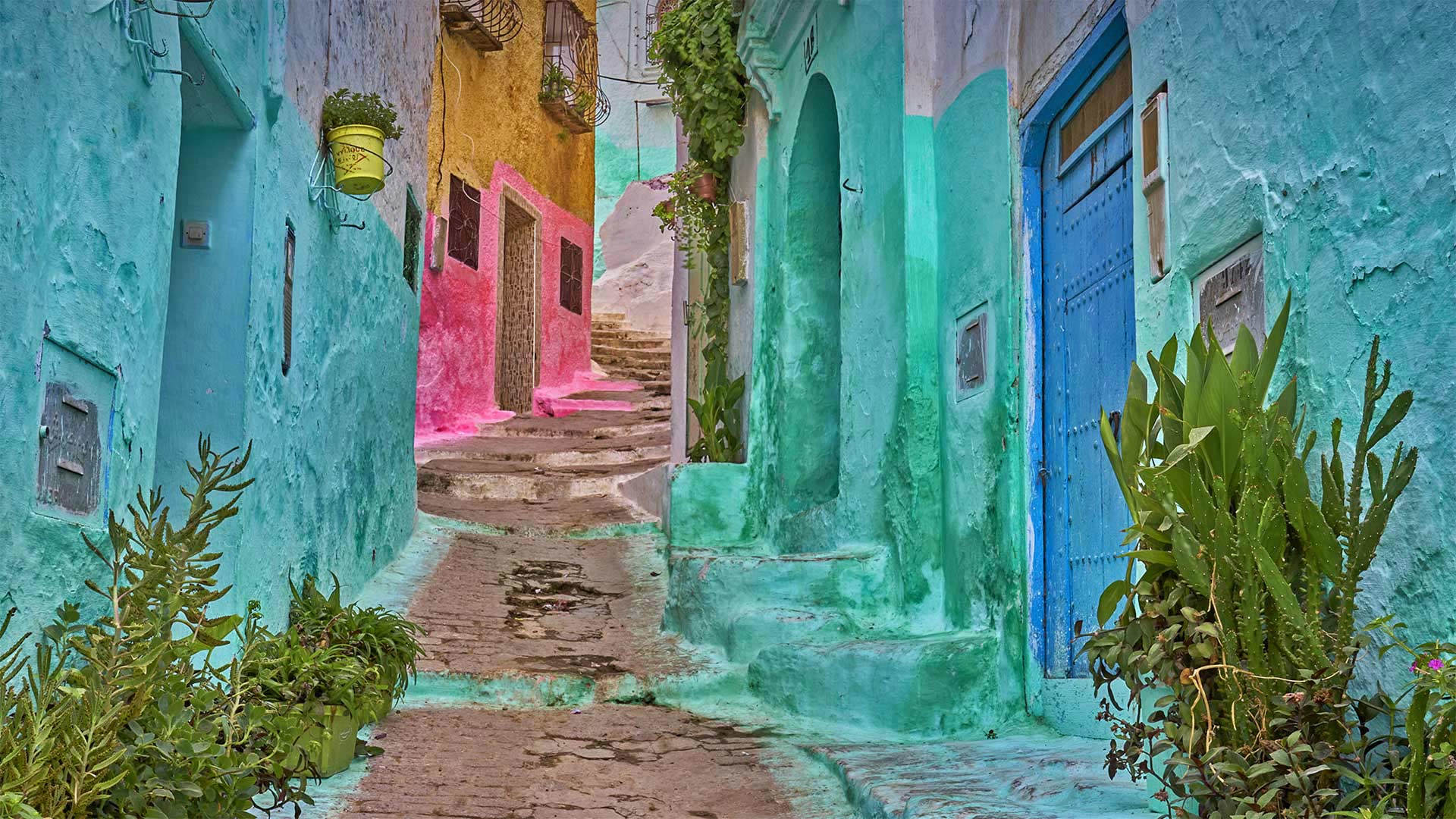麦地那的彩色小巷, 摩洛哥得土安市 Colorful alleyway in the medina of Tétouan, Morocco (© Jan Wlodarczyk/eStock Photo)

麦地那的彩色小巷, 摩洛哥得土安市 Colorful alleyway in the medina of Tétouan, Morocco (© Jan Wlodarczyk/eStock Photo)
Wander the ancient medina
This colorful alleyway is in the medina—the ancient part—of the Moroccan city of Tétouan. From above, the medina appears to be a maze of ancient white plaster buildings surrounded by rampart walls and seven magnificent gates. But inside the maze, some alleyways like this one display a burst of color, an embellishment created by mixing pigments into the buildings' plaster. The alleyways here are tall and skinny, large enough for a donkey and its handler to pass by, but too small for vehicles, so they invite peaceful strolls through the colorful shade.
The old city was founded by the Amazigh people in the 13th century, but 200 years later, Castilians from the Iberian Peninsula destroyed the fortified settlement. The medina later became a refuge for Muslims and Sephardic Jews from Andalusia who were fleeing the Reconquista and the Spanish Inquisition. These refugees helped rebuild the city that had been destroyed by Castilians, making a significant mark on Tétouan's architecture, art, and cuisine. The medina remains largely unchanged all these centuries later, making it a natural fit as a UNESCO World Heritage Site.
漫步古老的麦地那
这条五颜六色的小巷位于摩洛哥特图昂市古老的麦地那。从上面看,麦地那似乎是由古老的白色石膏建筑组成的迷宫,周围有城墙和七扇宏伟的大门。但在迷宫里,一些像这样的小巷展现出一种色彩的爆发,一种将颜料混合到建筑物灰泥中的装饰。这里的小巷又高又瘦,大到可以让驴子和驯驴人经过,但对车辆来说太小了,所以它们邀请人们在五颜六色的树荫下安静地漫步。
这座古城是13世纪阿马齐格人建立的,但200年后,来自伊比利亚半岛的卡斯蒂利亚人摧毁了这个设防的定居点。麦地那后来成为穆斯林和从安达卢西亚逃离收复和西班牙宗教裁判所的塞法德犹太人的避难所。这些难民帮助重建了被卡斯蒂利亚人摧毁的城市,在泰图昂的建筑、艺术和美食上留下了重要的印记。几个世纪后,麦地那基本上保持不变,成为联合国教科文组织的世界遗产地。
评论已关闭